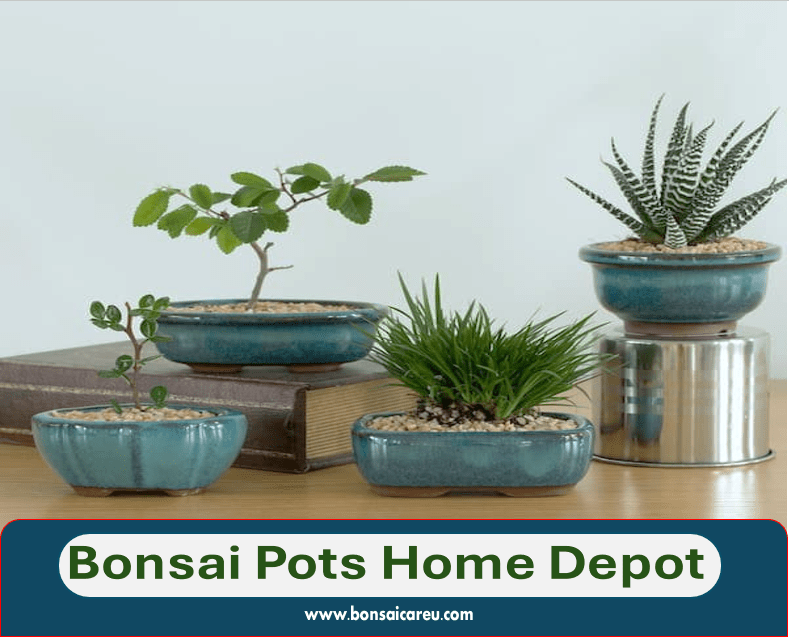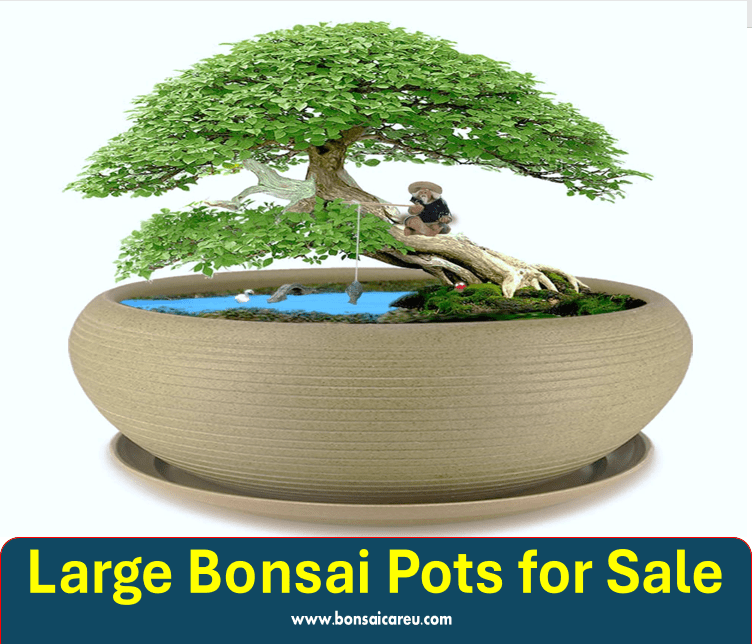Do Bonsai Pots Need Drainage Holes? Bonsai pots need drainage holes to prevent root rot by allowing excess water to drain. Bonsai roots can rot without proper drainage, leading to the tree’s death.
One essential factor to consider when caring for bonsai trees is the type of pot used for planting. Bonsai pots come in various materials, such as ceramic, concrete, plastics, and metals, and they have drainage holes crucial to preventing water retention.
Proper aeration is essential for healthy root growth, and pots without drainage holes can hinder this process, leading to root rot. We will explore the importance of drainage holes in bonsai pots and how they contribute to your bonsai tree’s overall health and longevity.

Benefits Of Drainage Holes
Bonsai pots with drainage holes offer several benefits that contribute to the health and vitality of the bonsai tree. The presence of these holes is crucial for the prevention of root rot, enhancement of aeration, and efficient drainage of excess water.
Preventing Root Rot
Drainage holes play a pivotal role in preventing root rot. Excessive moisture around the roots can lead to fungal infections, ultimately damaging or killing the plant. By utilizing pots with proper drainage holes, excess water can easily drain, reducing the risk of root rot and fungal infestations.
Enhancing Aeration And Drainage
Aeration and drainage are significantly enhanced by drainage holes. These holes allow for improved air circulation and water drainage within the soil, preventing waterlogging and promoting a healthier root system. Drainage holes ensure that the soil remains well-aerated, creating an optimal environment for the bonsai tree’s roots to thrive.

Consequences Of No Drainage Holes
Bonsai pots need drainage holes to allow excess water to drain and prevent root rot. The soil becomes waterlogged without drainage holes, and the roots can suffocate, ultimately killing the bonsai tree. It’s crucial to choose a pot with proper drainage to ensure the health and longevity of your bonsai.
Root Rot Risk
Excess water retention in pots can lead to root rot. Fungal infections cause root rot due to excessive moisture around the roots, which can damage or kill the plant.
Soil Compaction Issues
Without proper drainage holes, soil can become compacted. Soil compaction restricts root growth and reduces oxygen levels, leading to poor plant health.
Choosing The Right Bonsai Pot
It’s crucial to choose a bonsai pot with adequate drainage holes to ensure proper drainage and prevent root rot. Excess water must be able to drain immediately from the pot, as good drainage is essential for the health of the bonsai tree.
A shallow pot with proper drainage holes can help prevent root rot by allowing excess water to drain more easily.
Materials
Bonsai pots can be made of various materials such as ceramic, concrete, plastics, and metals. However, be cautious with metals as they may release toxins harmful to the bonsai tree.
Drainage Holes
Drainage holes are crucial for bonsai pots as they allow excess water to drain out, preventing root rot and ensuring proper aeration for the roots.
When choosing a bonsai pot, ensure it has adequate drainage holes to maintain the health of your bonsai tree.
Maintaining Bonsai Pots
Proper maintenance of bonsai pots is essential for the health and well-being of your bonsai tree. From cleaning and unclogging drainage holes to repotting practices, these tasks play a crucial role in ensuring the longevity and vitality of your bonsai plant.
Cleaning And Unclogging Drainage Holes
Regularly cleaning and unclogging the drainage holes in your bonsai pot is imperative to prevent water accumulation, which can lead to root rot and other detrimental issues. Use a small brush or a toothpick to clear any debris or soil particles obstructing the drainage holes. This simple practice will promote proper water drainage and aeration, maintaining the overall health of your bonsai tree.
Repotting Practices
Repotting your bonsai tree at the right time and with proper techniques is crucial for its growth and development. When repotting, ensure the new pot has adequate drainage holes to facilitate efficient water flow.
Additionally, a well-draining bonsai soil mix promotes healthy root growth and prevents waterlogging. Repotting at regular intervals, typically every 2-5 years, depending on the species allows for the inspection and maintenance of the root system and soil condition, contributing to your bonsai tree’s overall health and vigor.
Diy Solutions For Potting
Bonsai pots should have drainage holes to ensure proper drainage and prevent root rot. These holes allow excess water to escape, promoting healthy root growth and preventing water retention issues. Proper drainage is crucial for maintaining the health and longevity of bonsai trees.
Proper drainage is essential for its health and longevity when potting your bonsai tree. Here are some DIY solutions to help you create the ideal environment for your bonsai:
Drilling Drainage Holes
Drilling additional drainage holes in your bonsai pot can improve water flow and prevent root rot. Use a drill with a small bit to create adequate drainage for your bonsai tree.
Adding Mesh For Better Drainage
Place a mesh screen at the bottom of the pot to enhance drainage before adding soil. This will prevent soil from clogging the drainage holes and promote better aeration for your bonsai’s roots.
Frequently Asked Questions For Do Bonsai Pots Need Drainage Holes
What Is The Rule For Bonsai Pots?
Bonsai pots must have drainage holes to prevent root rot and ensure proper water drainage for healthy growth.
Do Bonsai Trees Need Good Drainage?
Bonsai trees need good drainage for excess water to drain immediately, preventing root rot and maintaining aeration.
Do Bonsai Trees Need Shallow Pots?
Yes, shallow pots help prevent root rot by allowing excess water to drain easily. Good drainage is crucial for preventing moisture-related issues.
Why Do Bonsai Pots Need Drainage Holes?
Drainage holes ensure excess water can drain immediately from the pot, preventing root rot and allowing for proper aeration.
Can I Use Pots With No Drainage Holes For Bonsai?
No, Bonsai pots without drainage holes will retain excess water, which can lead to root rot and potentially kill the plant.
What Happens If Bonsai Pots Don’t Have Proper Drainage?
Excess water retention can cause root rot, lack of aeration, and salt buildup, ultimately killing the Bonsai tree.
Conclusion
Drainage holes are essential for bonsai pots to prevent root rot and ensure proper aeration and drainage. Excess water must be able to drain immediately from the pot to maintain the health of the bonsai tree. Choosing the right pot with proper drainage holes is crucial for the overall well-being of your bonsai tree.


